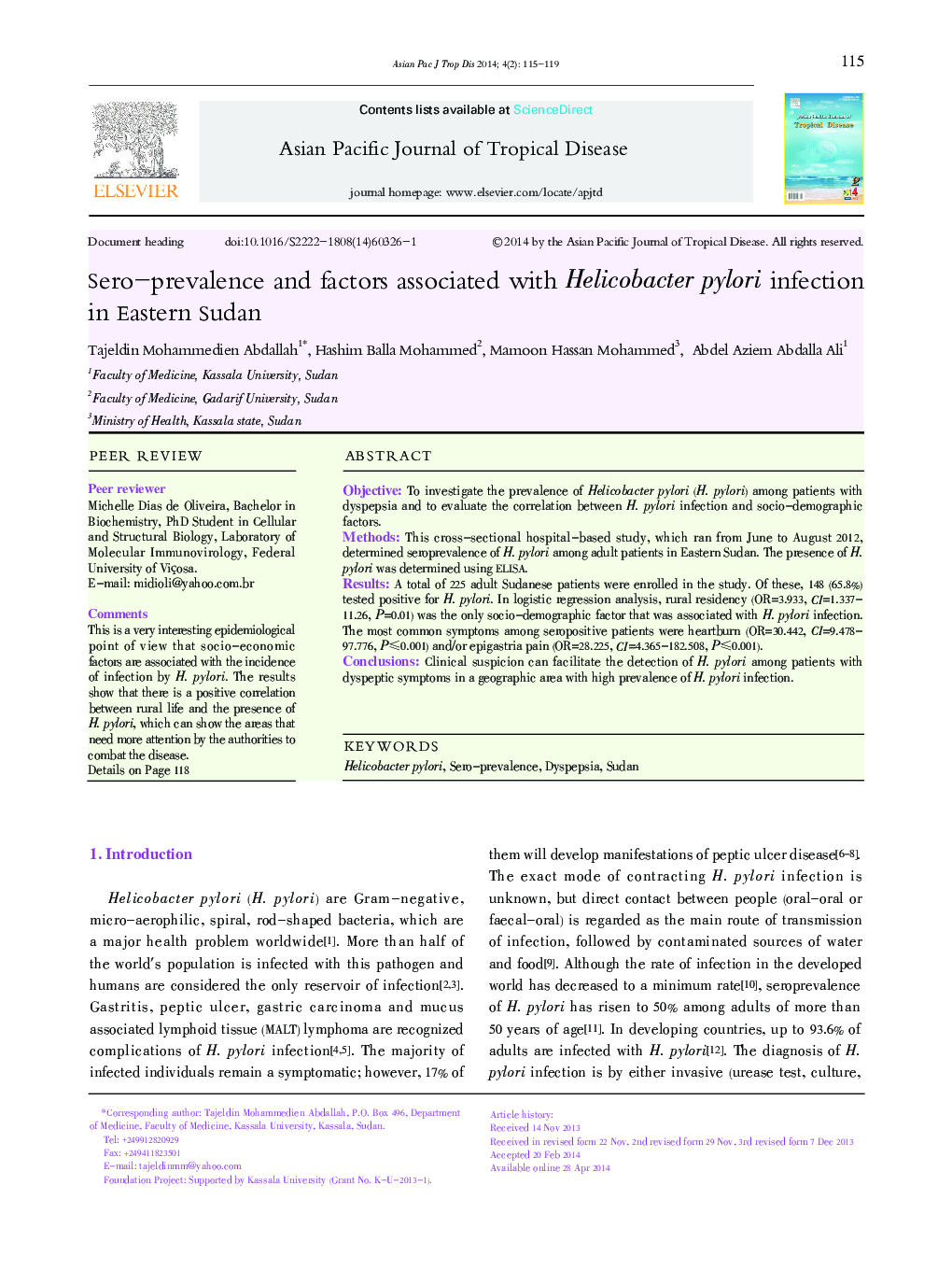| Article ID | Journal | Published Year | Pages | File Type |
|---|---|---|---|---|
| 3454188 | Asian Pacific Journal of Tropical Disease | 2014 | 5 Pages |
ObjectiveTo investigate the prevalence of Helicobacter pylori (H. pylori) among patients with dyspepsia and to evaluate the correlation between H. pylori infection and socio-demographic factors.MethodsThis cross-sectional hospital-based study, which ran from June to August 2012, determined seroprevalence of H. pylori among adult patients in Eastern Sudan. The presence of H. pylori was determined using ELISA.ResultsA total of 225 adult Sudanese patients were enrolled in the study. Of these, 148 (65.8%) tested positive for H. pylori. In logistic regression analysis, rural residency (OR=3.933, CI=1.337–11.26, P=0.01) was the only socio-demographic factor that was associated with H. pylori infection. The most common symptoms among seropositive patients were heartburn (OR=30.442, CI=9.478–97.776, P⩽0.001) and/or epigastria pain (OR=28.225, CI=4.365–182.508, P⩽0.001).ConclusionsClinical suspicion can facilitate the detection of H. pylori among patients with dyspeptic symptoms in a geographic area with high prevalence of H. pylori infection.
